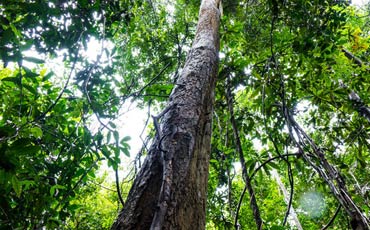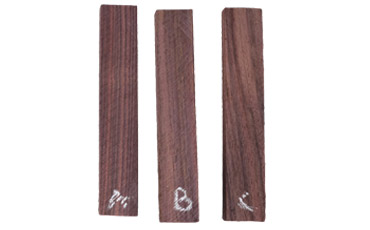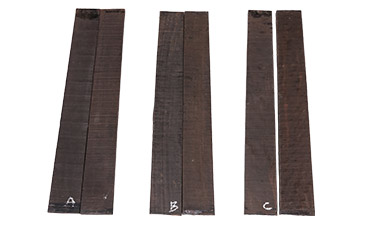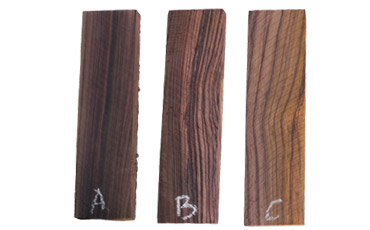Our Wood Species




About Our Wood Species
Indian Rosewood (Dalbergia latifolia): also known as East Indian rosewood, is native to southern India. It features heartwood that varies from rose to deep brown, often with darker purple-black lines, and has a moderately coarse, uniform texture with a dull to medium gloss. This wood is commonly used for furniture, cabinetry, musical instruments, decorative carvings, flooring, and turnery.
Dalbergia sissoo, commonly known as sheesham, is native to the Indian subcontinent. It is a durable hardwood with a distinctive dark-colored appearance and unique grain patterns, making it popular for furniture, flooring, and decorative items and additionally holds medicinal properties.
Palmyra Palm (Borassus flabellifer):
commonly known as the black palm, is a robust tree native to South and Southeast Asia, including countries like India, Sri Lanka, Myanmar, Thailand, and Indonesia.
It typically reaches heights of up to 30 meters and can live for over a century with a trunk diameter of 2-3 ft (.6-1 m).Black Palm is recognized for its durability against decay however, it remains susceptible to insect infestations.
This wood is commonly utilized in applications such as flooring, boatbuilding, walking sticks, knife and tool handles, rafters, furniture, and turned objects.
Notably, Black Palm is neither listed in the CITES Appendices nor on the IUCN Red List of Threatened Species, indicating it is not currently considered at risk.
Indian Ebony Diospyros ebenum (Ceylon Ebony): is a slow-growing evergreen tree native to southern India and Sri Lanka. It typically reaches heights of up to 20 meters.The heartwood is a rich, dark black with occasional light streaks, while the sapwood is light yellowish gray. The wood has a fine, smooth texture with a natural glossy finish
The wood is prized for crafting piano keys, fingerboards, and other components of musical instruments due to its density and smooth finish. Items such as knife handles, brush holders, and chopsticks are made from this wood.
Indian laurel (Terminalia tomentosa): also known as teak, is a hardwood species native to South and Southeast Asia. Indian laurel offers a viable and sustainable alternative to rosewood, particularly in regions where it is abundant. Its use in various applications highlights its versatility and appeal as a hardwood optiondue to its durability and attractive appearance.
Unlike true rosewoods (Dalbergia species), which are subject to international trade restrictions under CITES, Indian laurel is not listed, making it a more accessible and sustainable alternative.
Indian Oak: is renowned for its robustness and stunning visuals. It has a rich, brown colour with deep grains that are both aesthetically pleasing and easy to work with. Its durability makes it ideal for heavy-duty furniture like cabinets and wardrobes, as well as decorative items. Additionally, its resistance to decay extends its use to outdoor furniture and structures.
Indian Mahogany (Swietenia Mahogani): known for its exceptional durability and beautiful reddish-brown colour, is a favourite in both historical and modern design contexts. Its straight, fine grain and natural luster make it a preferred choice for high-end furniture, flooring, and musical instruments such as guitars and pianos. Mahogany's resistance to moisture and decay enhances its suitability for use in boats and outdoor settings. Culturally, it holds significant value and supports local economies through sustainable harvesting practices.
